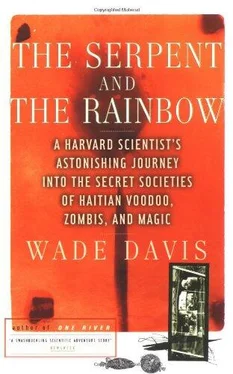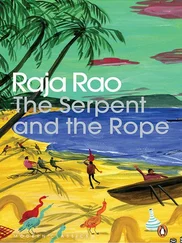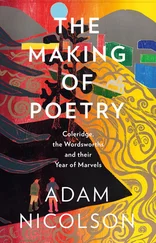Wade Davis - The Serpent and the Rainbow
Здесь есть возможность читать онлайн «Wade Davis - The Serpent and the Rainbow» весь текст электронной книги совершенно бесплатно (целиком полную версию без сокращений). В некоторых случаях можно слушать аудио, скачать через торрент в формате fb2 и присутствует краткое содержание. Год выпуска: 1985, Издательство: Simon & Schuster, Жанр: Старинная литература, на английском языке. Описание произведения, (предисловие) а так же отзывы посетителей доступны на портале библиотеки ЛибКат.
- Название:The Serpent and the Rainbow
- Автор:
- Издательство:Simon & Schuster
- Жанр:
- Год:1985
- ISBN:нет данных
- Рейтинг книги:5 / 5. Голосов: 1
-
Избранное:Добавить в избранное
- Отзывы:
-
Ваша оценка:
- 100
- 1
- 2
- 3
- 4
- 5
The Serpent and the Rainbow: краткое содержание, описание и аннотация
Предлагаем к чтению аннотацию, описание, краткое содержание или предисловие (зависит от того, что написал сам автор книги «The Serpent and the Rainbow»). Если вы не нашли необходимую информацию о книге — напишите в комментариях, мы постараемся отыскать её.
The Serpent and the Rainbow — читать онлайн бесплатно полную книгу (весь текст) целиком
Ниже представлен текст книги, разбитый по страницам. Система сохранения места последней прочитанной страницы, позволяет с удобством читать онлайн бесплатно книгу «The Serpent and the Rainbow», без необходимости каждый раз заново искать на чём Вы остановились. Поставьте закладку, и сможете в любой момент перейти на страницу, на которой закончили чтение.
Интервал:
Закладка:
A third group, also anthropologists, agree with this perspective but carry it further by suggesting an actual mechanism to account for physical death. They point out that in many cases the victim of voodoo death is not merely a benign presence but, having by definition crossed into the realm of the spirits, has become an actual threat that must be removed. And in the case of the Australian aborigines, this is precisely what happens. Weakened by the long ordeal, the victim of sorcery receives no relief from even his closest relatives. On the contrary, these former supporters actually take food and water away, on the theory that a dead person has no need for either and with the motive, as one physician was told, “if real close up finish, take water away so spirit goes.” In the deserts of Australia, where the daytime temperatures average over one hundred degrees Fahrenheit in the shade, death by dehydration occurs in about twenty-four hours.
Not all cases of voodoo death are as clearly explicable as these examples reported from Australia, where because of the harsh climate a relatively simple act by the kin eliminates the victim’s life supports. More usual in voodoo death, but again more enigmatic, the victim dies despite the fact that his family offers succor.
All that can be ascertained is that voodoo death occurs, and that as a process it involves a number of complementary factors. Fear probably does initiate physiological changes. Certainly it makes the victim psychologically vulnerable, and this in turn affects the physical health. Neurophysiologists still do not fully understand the process, though the response of the victim’s family and society would seem inevitably to influence both his psychological and his physical well-being. So, while a universal mechanism to account for voodoo death has not been identified, the basic assumption is clear. As one researcher has put it, the brain has the power to kill or maim the body that bears it.
•
The metamorphosis of Clairvius Narcisse from human to zombi was a very special instance of voodoo death. A sorcerer’s spell initiated a long process that exploited the victim’s greatest fears, mobilized the reinforcing beliefs of the community, and finally led to actual death. To the Haitian peasants Narcisse really did die, and what was magically taken from the ground was no longer a human being. Like many sorcerers around the world, the bokor that spun his death had a prop—in this case an ingenious poison that served as a template upon which the victim’s worst fears might be amplified ten thousand times. Still, in the end, it was not the powder that sealed Narcisse’s fate, it was his own mind.
Consider for a moment what he went through. As a Haitian peasant he had been socialized since childhood to believe in the reality of the living dead. This conviction had been enforced throughout his life by both a complex body of folklore and, more importantly, the direct testimony of friends and family; in Haiti virtually everyone has a vivid zombi tale to tell. For Narcisse, a zombi was a being without will, on the very frontier of the natural world, an entity that could manifest itself as either spirit or human. Zombis do not speak, cannot fend for themselves, do not even know their names. Their fate is enslavement. Yet given the availability of cheap labor, there would seem to be no economic incentive to create a force of indentured service. Rather, given the colonial history, the concept of enslavement implies that the peasant fears and the zombi suffers a fate that is literally worse than death—the loss of physical liberty that is slavery, and the sacrifice of personal autonomy implied by the loss of identity. Critically, for Narcisse as for all Haitian peasants, the fear is not of being harmed by zombis, but rather of becoming one. And it is to prevent such a horrid fate that the relatives of the dead may reluctantly mutilate the corpse if there is any suspicion of foul play. Unless, of course, the family itself was involved in the zombification.
Not only did Narcisse believe in zombis, he undoubtedly was aware of how and why they were created. When his world began to close in on him, he was already personally isolated. Within his lakou he had been ostracized because of his antisocial behavior; within his own family he was actively engaged in a dispute with his brother over the question of the right to sell heritable land. Eventually it was, by all accounts, that very brother who sold him to the bokor. Had Narcisse been in the right, and was zombified by his adversary without the support of the community, it is difficult to imagine that the brother would have been tolerated in the community for close to twenty years. But in fact he was, and even today Narcisse is not. In all likelihood, at the time of his demise, Narcisse had support from neither his immediate society nor his kin; his closest relatives may have been his greatest enemies. And since family members were involved, gossip and rumors undoubtedly took their toll, especially when he began to suffer physical symptoms that he had never known. Gradually as these symptoms got worse and worse, he would have realized that he had become a victim of sorcery. And more than likely he knew why.
His symptoms were real and concrete, and they worsened. He consulted houngan, but they did nothing. By now desperate, he entered the alien environment of the Schweitzer Hospital, knowing something the doctors did not. His condition deteriorated rapidly, and then something more extraordinary occurred. We have noted the devastating impact that social death has on victims of voodoo death throughout the world. The Haitian model takes this one step further. Narcisse was actually pronounced dead in a hospital by Western-trained physicians. More incredibly, from the known actions of the toxins in the poison, and from his own testimony, there is every reason to believe that he remained conscious for much of the time. He actually heard himself pronounced dead, was aware of his sister’s weeping, saw the sheet lifted over his face. Like the Japanese victims of tetrodotoxin, he strove desperately to communicate, but with the paralytic poison, he found it impossible.
Then Narcisse entered another realm. Having caused such a dramatic, virtually complete, reduction in metabolic rate, the poison took its victim quite literally to the frontier of death. Indeed, it very nearly killed him … as it may have killed many others. His symptoms remained consistent, yet at one point there seems to have been a qualitative change. Perhaps not surprisingly, the advanced symptoms of known tetrodotoxin poisoning merge with those of what Western physicians have termed the autoscopic near-death experience (NDE). Recall once again his description. He sensed that he was floating above his body at all times. When they placed him in the cemetery, he remained above his tomb, still floating, constantly aware of everything that was going on. He was content, he was without fear. He sensed that his soul was about to take a great journey, and it did travel, he insisted, taking in great passages over the land, timeless passages, immaterial yet powerfully real. His travels were multidimensional, yet they always returned him to the gravesite. His notion of time was lost. His tomb was the only axis of his existence.
Strange things happen to us when we die, at least if we are to believe the word of those who come back. Those who have been close to death speak of an ineffable dimension where all intuitive sense of time is lost. Like a dreamscape, it is timeless, but unlike a dream it is impossibly real, a place of crystal awareness wherein the process of death is acknowledged as something positive, calm, even beautiful.
Like Narcisse, virtually every medical patient who has been to the frontier of death experiences a profound separation between his material body and an invisible, nonmaterial aspect of himself, one that often hovers above the flesh; and in nearly all cases the patient identifies not with the body, but with the spirit. An elderly woman who nearly died during severe complications following surgery in a Chicago hospital wrote her physician, “I was light, airy, and felt transparent.” Often patients distinctly remember floating above their bodies, looking down at their material selves. A cardiac patient noted, “I was going up slowly, like floating … I was looking from up, down … they were working the hell out of me.” Also typical is the amazement of a construction worker from Georgia following cardiac arrest: “I recognized me lying there … [it was] like looking at a dead worm or something. I didn’t have any desire to go back to it.” Sometimes survivors of autoscopic near-death experiences recall conversations between attending physicians and nurses. Often they describe their frustration at not being able to communicate with others physically present at their bedside. “I tried to say something,” one patient remembered, “but she [the nurse] didn’t say nothing … she was like looking at a movie screen that can’t talk back and that doesn’t recognize you’re there. I was the real one and she was unreal. That’s the way I felt.” Certain survivors describe an extraordinary ability to “travel” through space and time. “It was just a thought process,” one explains. “I felt like I could have thought myself anywhere I wanted to be instantly. I could do what I wanted to … it’s realer than here, really.”
Читать дальшеИнтервал:
Закладка:
Похожие книги на «The Serpent and the Rainbow»
Представляем Вашему вниманию похожие книги на «The Serpent and the Rainbow» списком для выбора. Мы отобрали схожую по названию и смыслу литературу в надежде предоставить читателям больше вариантов отыскать новые, интересные, ещё непрочитанные произведения.
Обсуждение, отзывы о книге «The Serpent and the Rainbow» и просто собственные мнения читателей. Оставьте ваши комментарии, напишите, что Вы думаете о произведении, его смысле или главных героях. Укажите что конкретно понравилось, а что нет, и почему Вы так считаете.












